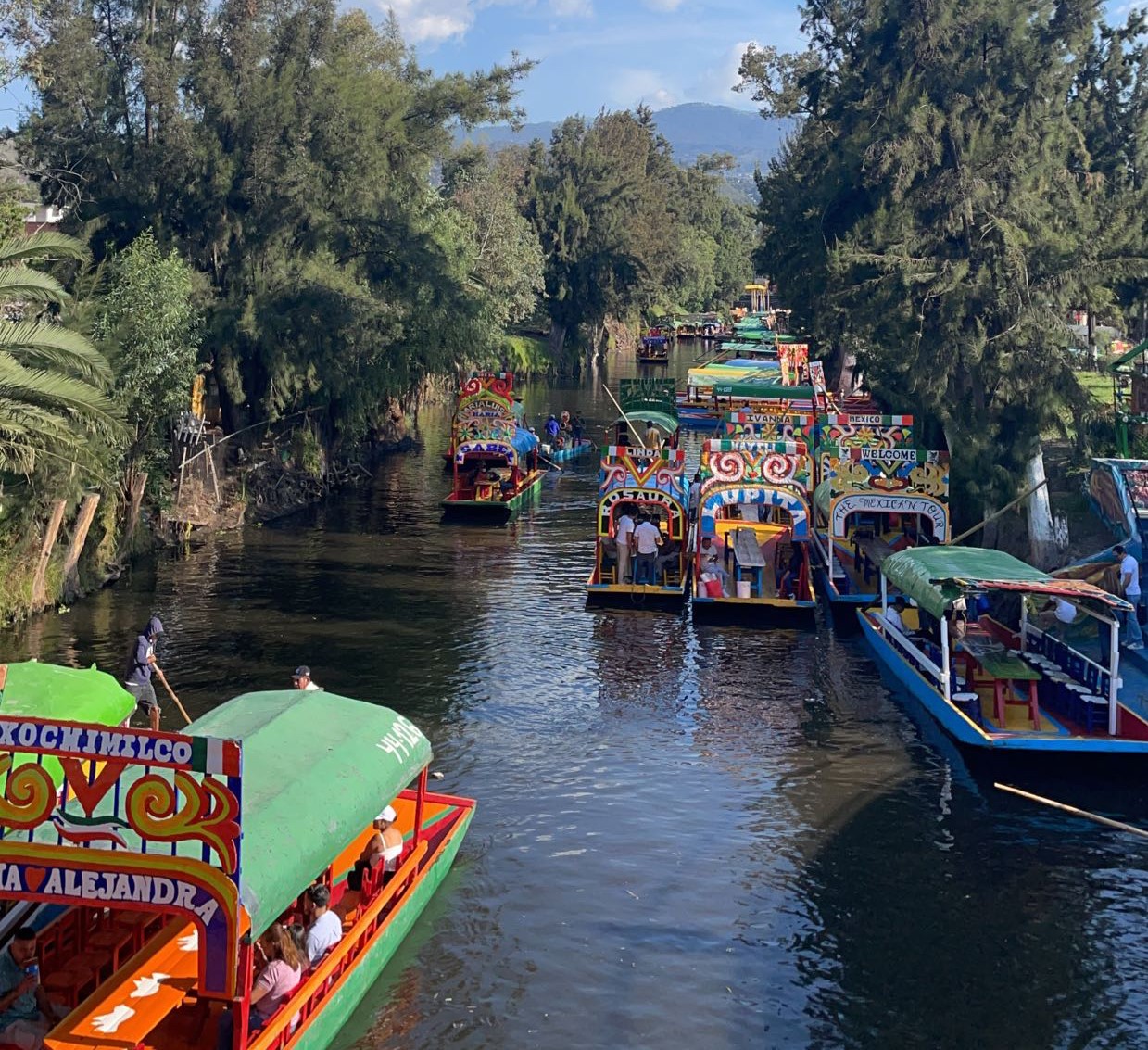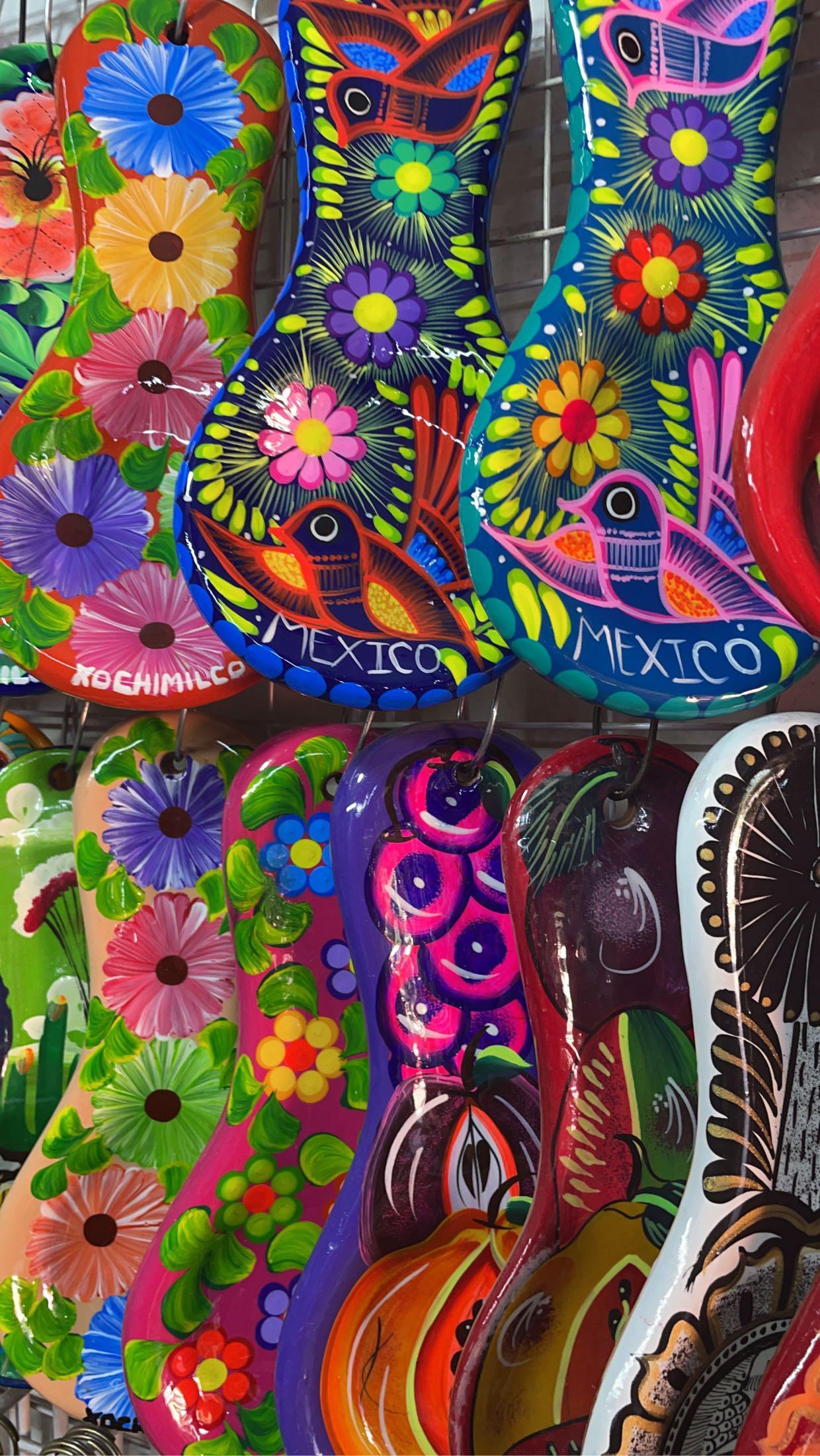Xochimilco!
By: Dianna Trujillo, CAS ’25

Trajineras cruising down the canal.
GRIP: Ashoka
In my time in Mexico City, I can probably say that I visited the canals of Xochimilco more than the average tourist does during their stay, specifically four times in a short span of time. Xochimilco, for those who don’t know, is a lovely neighborhood in southern Mexico City characterized by its canals and colorful trajineras (canal boats), said canals being the last remaining trace of the original canals that the Aztecs had built as transportation.

I fell in love with the calm waters, the bright and colorful boat decorations and the kind vendors who row around in little boats, selling assorted local foods and candies. The canal seems to explode with color and music: each trajinera is decorated with bright neon paint and colorful flags. The roof of one I got to ride in had the most beautiful mural painted inside, and the tables and chairs that furnish these boats were also brightly colored and showing all the signs of loving use. Xochimilco appeals to all ages and demographics — a bursting bridal party might pass you on the left, while a handful of college kids pump loud music on speakers to your right. You’ll pass many trajineras carrying full generations of families, from the oldest grandparents to the youngest children as they set up family reunions on the water. You’ll hear everything from the newest reggaeton on speakers to the oldest mariachi songs being played live.

Xochimilco is a great place to truly see the beautiful nature of Mexico City. The surrounding chinampas, or artificial islands, are full of flower farms and different local plants. There’s local food stops, where your trajinera just pulls up the edge of the canal and you can buy snacks without even getting off of your boat. The food is delicious, local, and truly authentic — my personal favorite was a chicharron quesadilla. It’s truly heartwarming to see the communities that have built their lives around these canals, people whose families have been in the neighborhood for generations and who continue to operate the small businesses that keep the place beautiful. There’s also dozens of artisanal shops at the docks, selling all sorts of talavera and other hand-made gifts. Each time I returned I found it harder and harder to resist the urge to buy all sorts of home decor and ware!
I was lucky enough to experience Xochimilco with locals who I befriended, getting a true view into what the neighborhood and canals are like. It’s a beautiful place, rich with color and culture, and I truly hope that it continues to be preserved for more people to enjoy.
The Global Research and Internship Program (GRIP) provides outstanding undergraduate and graduate students the opportunity to intern or conduct research abroad for 8 to 12 weeks over the summer. Participants gain career-enhancing experience and global exposure that is essential in a global workforce.